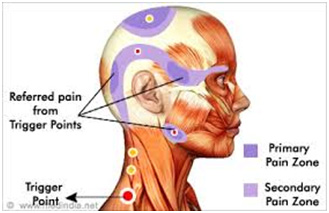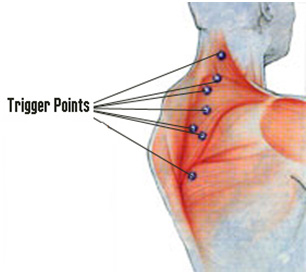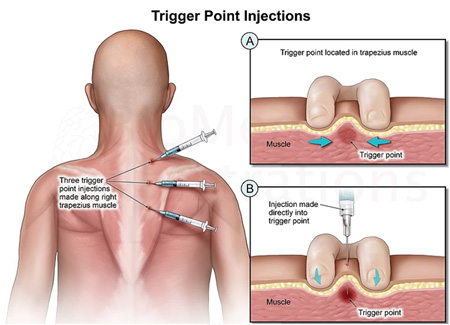
 Myofascial Pain Syndrome (MPS)
Myofascial Pain Syndrome (MPS)
Myofascial pain syndrome (MPS) is a syndrome characterized by chronic pain in multiple myofascial trigger points ("knots"). It can appear in any body part.
The pain in MPS comes from the myofascial trigger point—a small, painful nidus of hardened muscle that sits in a band of contracted muscle within a muscle belly.
The trigger point is a focus of sensory hyperirritability on a discrete, hyperactive region of muscle. The trigger point is often described by its degree of activity A very active trigger point causes spontaneous pain with activation of the muscle and sometimes even at rest. This is called an active trigger point.
 The nature of myofascial pain is characteristic of all somatic pain. It is dull, deep, aching, and poorly localized. It can mimic radicular or visceral pain. There may be a component of paresthesias or dysesthesias in addition to or instead of pain.
The nature of myofascial pain is characteristic of all somatic pain. It is dull, deep, aching, and poorly localized. It can mimic radicular or visceral pain. There may be a component of paresthesias or dysesthesias in addition to or instead of pain.
Parasthesias such as tingling, when present, are generally in the distribution of the nerve roots innervating the relevant trigger point. In contrast to cutaneous pain, myofascial pain is more likely to cause referred pain. Pain may be experienced as referred to other regions of the body, such as the head, neck, or hip, as referred pain. Importantly, it is the referred pain that may be the presenting complaint.
TREATMENT
NSAIDS
Opoids
TCA
Muscle relaxants
Trigger point injections
